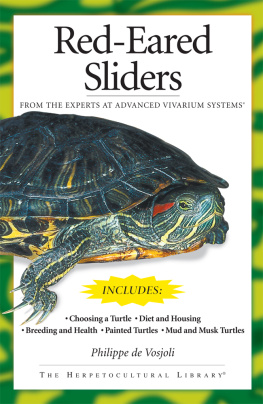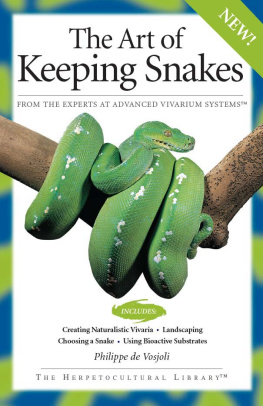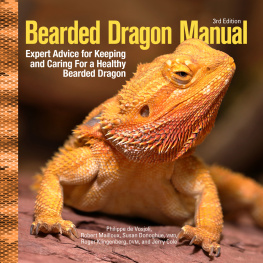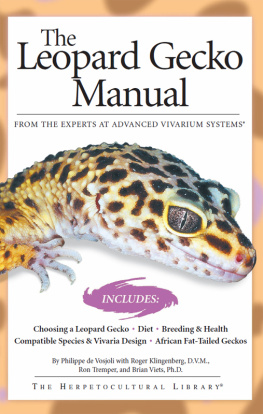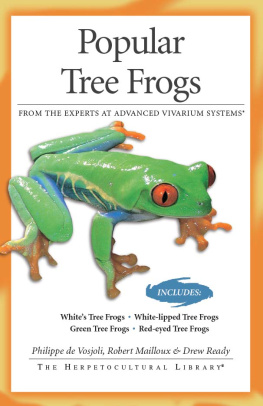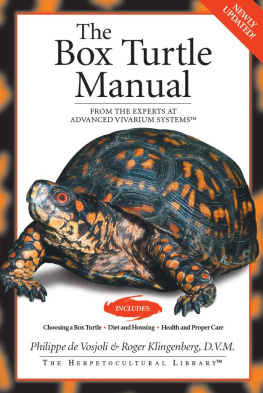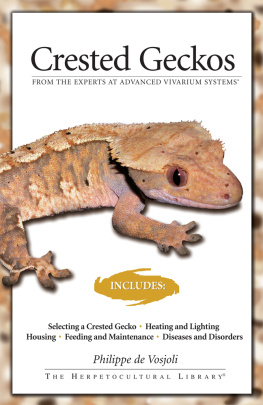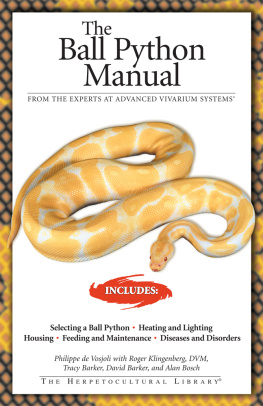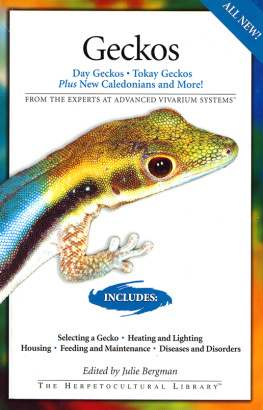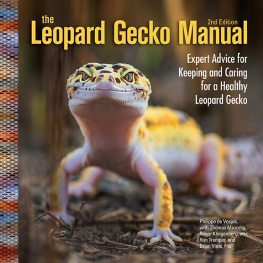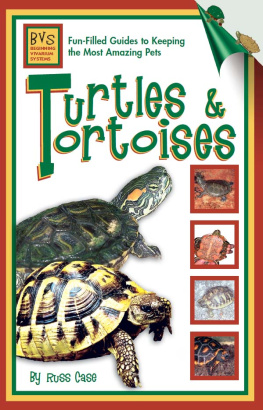
ABOUT THE AUTHOR
Philippe de Vosjoli is a highly acclaimed author of the best-selling reptile-care books, The Herpetocultural Library Series. His work in the field of herpetoculture has been recognized nationally and internationally for establishing high standards for amphibian and reptile care. His books, articles, and other writings have been praised and recommended by numerous herpetological societies, veterinarians, and other experts in the field. Philippe de Vosjoli was also the cofounder and president of The American Federation of Herpetoculturists, and was given the Josef Laszlo Memorial Award in 1995 for excellence in herpetoculture and his contribution to the advancement of the field.
CHAPTER 1
GENERAL INFORMATION
R ed-eared sliders belong to the large turtle family Emydidae. They are a subspecies of the large and variable Trachemys scripta complex, which currently consists of fourteen subspecies that inhabit the United States, Mexico, Central America, and parts of South America.
The current scientific name of red-eared sliders is Trachemys scripta elegans. In most older publications, red-eared sliders and their relatives are listed under the genera Chrysemys or Pseudemys.
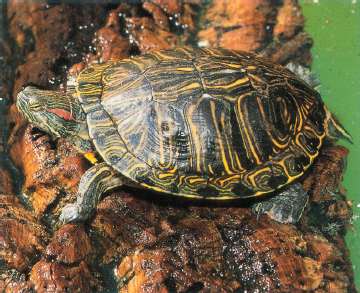
Given a proper setup, red-eared sliders make one of the most stunning and interesting vivarium animals available. Photo by Bill Love
Distribution: Red-eared sliders range from Indiana to New Mexico and south to the Gulf of Mexico and extreme northeast Mexico. There are relict colonies in Ohio, West Virginia, and Kentucky. As a result of released or escaped captives, populations also exist in several other localities.
Size: Adults normally reach 5 to 8 inches long. The largest recorded red-eared slider measured 11 inches.
Sexing: Males are smaller than females. When mature, males develop long foreclaws and have longer tails with a thicker base than those of females. In males, the vent (opening to the cloaca, the common cavity in which genital, digestive, and urinary tracts release their contents) is located at a greater distance from the body than in females. Hatchlings cannot be reliably sexed.

Mature male red-eared sliders (left) have a significantly longer tail than females (right).
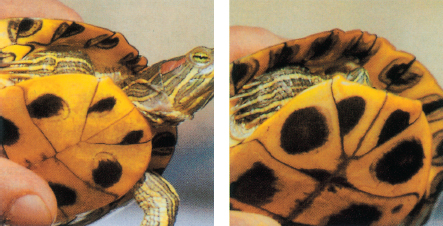
Mature male red-eared sliders (left) have more elongated foreclaws than females (right).
Growth: In males, sexual maturity is a function of size, reached at a length of 3 to 4 inches. Depending on care, they achieve this size in two to four years. For females, sexual maturity appears to depend on age, not size. In the wild, females become sexually mature between five and seven years old. Mature females usually have a shell length of at least 5 inches. When raised under optimal captive conditions without hibernation, males reach sexual maturity in two and a half years and females reach it in three and a half years. Hatchlings and young animals fed high protein diets (25 to 40 percent) have a faster growth rate. Once these animals reach sexual maturity, reduce the protein to 10 to 25 percent of their diet.
Longevity: If kept under the proper conditions, red-eared sliders often live for fifteen to twenty-five years, sometimes even longer.
Color and Color Morphs
Because several million red-eared sliders are produced annually for sale outside of the United States and because many hobbyists selectively breed color morphs for their aesthetic appeal, several color morphs of red-eared sliders are now available in the specialist reptile trade. The most popular morph is the albino red-eared slider, which, as a juvenile, is bright lemon yellow with prominent orangered patches on the sides of the head. These albino red-ears vary in color intensity. Some have more washed out yellow coloration than others. As they grow into adults, the yellow tends to fade to cream yellow, but factors such as diet may affect this. Further selective breeding, such as outbreeding with ornate red-eared sliders from Texas, may improve this trait.
Most other red-eared slider morphs are sold under the general category pastel. The term is applied to a wide variety of color morphs, characterized by varying degrees of hypomelanism (reduced black), hypoxanthism (reduced yellow), aberrations in pattern, and varying degrees of yellow and red pigmentation. Thus, one can have high red pastels or high yellow pastels. Ghost pastels, animals with an even grayish yellow coloration and no red or black pigmentation, are also available. Some pastel sliders have deep red eyes as a result of amelanism. Red-eared slider morphs have not been sufficiently clarified, and it may be several years before the many characteristics arbitrarily dumped under the pastel category are satisfactorily explained and isolated. Many pastel sliders have asymmetries and defects that suggest either incubation at inadequate temperatures or the expression of recessive genes. Examples include asymmetric shell patterns and/or scutes, reduced size of one or both eyes, and unusual enlargement of one or both eyes (often called pop eye). Some herpetoculturists (those who study and keep reptiles or amphibians) believe that many of the pastel traits are temperature induced and not necessarily of a genetic nature. Others assert that a significant percentage of pastel red-ears are of genetic origin because the category contains such a wide range of variant and aberrant turtles. Because of an increased interest in the selective breeding of red-eared sliders, it is likely that these issues will be clarified in the near future. In any case, considering the colorful nature of red-eared sliders, few turtles have such aesthetic potential for selective breeding.

Crossed or unusually large eyes are common in pastel sliders, and may be due to inadequate incubation temperatures.
Color Changes: Many populations of red-eared sliders become more melanistic (an increased amount of black body and shell pigmentation) as they get older. This is particularly true in males, where the changes in pigmentation appear to be linked to the production of the male hormone testosterone, and thus tend to correlate with the growth of the foreclaws. As the animals age, their shell and various body parts may become suffused in black.

Albino red-eared sliders vary in color intensity.
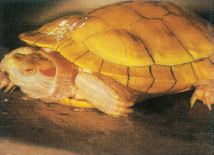
This is an adult female albino red-eared slider. Photo by Chris Wood
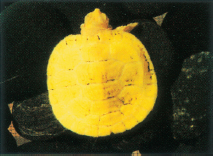
Next page
